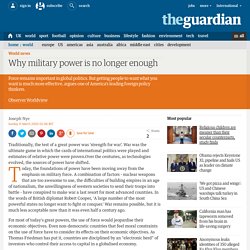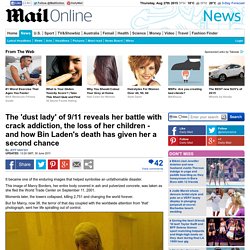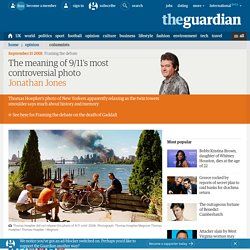

Towards a bipolar world (1945–1953) - The Cold War (1945–1989) Ressources DNL anglais. Histoire: "School History" est un site portail comprenant des centaines de ressources (exercices, diaporamas, documents sources etc.) couvrant les programmes anglais d'histoire. BBC History: portail de la BBC sur l'histoire en général mais centrée sur le Royaume Uni. A utiliser pour le fonds de cartes en anglais , ce site de l'éditeur Ablongman propose aussi des Timeline et des tableaux statistiques.
Ancien site K-12 modernisé et actualisé sous le nom d' Internet 4 classroom: page de ressources en Social Studies . Portail généraliste Spartacus est un point d'entrée fondamental sur quantité de sujets concernant l'histoire du Royaume Uni, mérite que l'on s'y perde. Site d'une télévision thématique américaine, History Classroom, mérite que l'on s'y attarde pour les ressources vidéos entre autres. "History GCSE" est un site proposant des révisions du programme d'histoire britannique pour le GCSE. "History learning Site" : site très riche en courtes leçons couvrant toutes sortes de sujets. Joseph Nye: Why military power is no longer enough. Traditionally, the test of a great power was 'strength for war'.

War was the ultimate game in which the cards of international politics were played and estimates of relative power were proven.Over the centuries, as technologies evolved, the sources of power have shifted. Today, the foundations of power have been moving away from the emphasis on military force. A combination of factors - nuclear weapons that are too awesome to use, the difficulties of building empires in an age of nationalism, the unwillingness of western societies to send their troops into battle - have conspired to make war a last resort for most advanced countries.
In the words of British diplomat Robert Cooper, 'A large number of the most powerful states no longer want to fight or conquer.' War remains possible, but it is much less acceptable now than it was even half a century ago. Paris Peace Conference and Treaty of Versailles. The six key moments of the Cold War relived. United States of America timeline. A chronology of key events: 1565 - First permanent European settlement in North America - St Augustine, present-day Florida - founded by the Spanish.

North America is already inhabited by several distinct groups of people, who go into decline following the arrival of settlers. 1607 - Jamestown, Virginia, founded by English settlers, who begin growing tobacco. 1620 - Plymouth Colony, near Cape Cod, is founded by the Pilgrim Fathers, whose example is followed by other English Puritans in New England. 17th-18th centuries - Hundreds of thousands of Africans brought over and sold into slavery to work on cotton and tobacco plantations. 1763 - Britain gains control of territory up to the Mississippi river following victory over France in Seven Years' War. War of Independence 1774 - Colonists form First Continental Congress as Britain closes down Boston harbour and deploys troops in Massachusetts.
Lesson 4: Fighting for Peace: The Fate of Wilson's Fourteen Points. In January 1918, Woodrow Wilson unveiled his Fourteen Points to the U.S.

Congress. The speech was a natural extension of the proposals he had offered in his "Peace without Victory" address and his request for a declaration of war. Presuming an Allied victory, the President proposed freedom of the seas and of trade, arms reductions, and fair settlement of colonial claims and possessions. He insisted that "open covenants of peace, openly arrived at," must be the benchmark of postwar negotiations. He suggested that a repentant and reformed Germany would not be oppressed, but rather welcomed into the international community.
20th Century Documents : 1900 - 1999. 20th Century Documents : 1900 - 1999 Act of Chapultepec; March 6, 1945 Agreement Between the United Kingdom and the Union of Soviet Socialist Republics : July 12, 1941 Agreement Between the Government of the United States of America and the Government of the Union of Soviet Socialist Republics on the Prevention of Incidents On and Over the High Seas; May 25, 1972.

SOURCEBOOK The USA and the World since 1918 DNL CA. VOCABULARY The USA and the World since 1918 DNL CA. LESSON The USA and the World since 1918 DNL CA. Marcy Borders: Osama Bin Laden's death gave 9/11 'dust lady' 2nd chance. By Jeff Maysh Updated: 13:20 GMT, 30 June 2011 It became one of the enduring images that helped symbolise an unfathomable disaster.

I was in that 9/11 photo Frank Rich wrote about. Here's what I think about his column. Yesterday, Slateposted this piece criticizing Frank Rich's New York Times column about the 9/11 photo shown here.

The picture was taken by Magnum photographer Thomas Hoepker on the afternoon of 9/11. Calling the image "shocking," Rich suggested that the five New Yorkers were "relaxing" and were already "mov[ing] on" from the attacks. Slate'sDavid Plotzdisputed that characterization of the picture, arguing that the subjects had almost certainly gathered to discuss the attacks and to find solace in others' company.
Rather than showing callousness, as Rich suggested, it depicted civic engagement. But since neither Rich nor Plotz knew exactly what the five New Yorkers in the photo were doing or thinking, weinvited them to contact Slateand tell us. The meaning of 9/11's most controversial photo. In the photograph Thomas Hoepker took on 11 September 2001, a group of New Yorkers sit chatting in the sun in a park in Brooklyn.

Behind them, across brilliant blue water, in an azure sky, a terrible cloud of smoke and dust rises above lower Manhattan from the place where two towers were struck by hijacked airliners this same morning and have collapsed, killing, by fire, smoke, falling or jumping or crushing and tearing and fragmentation in the buildings' final fall, nearly 3,000 people.